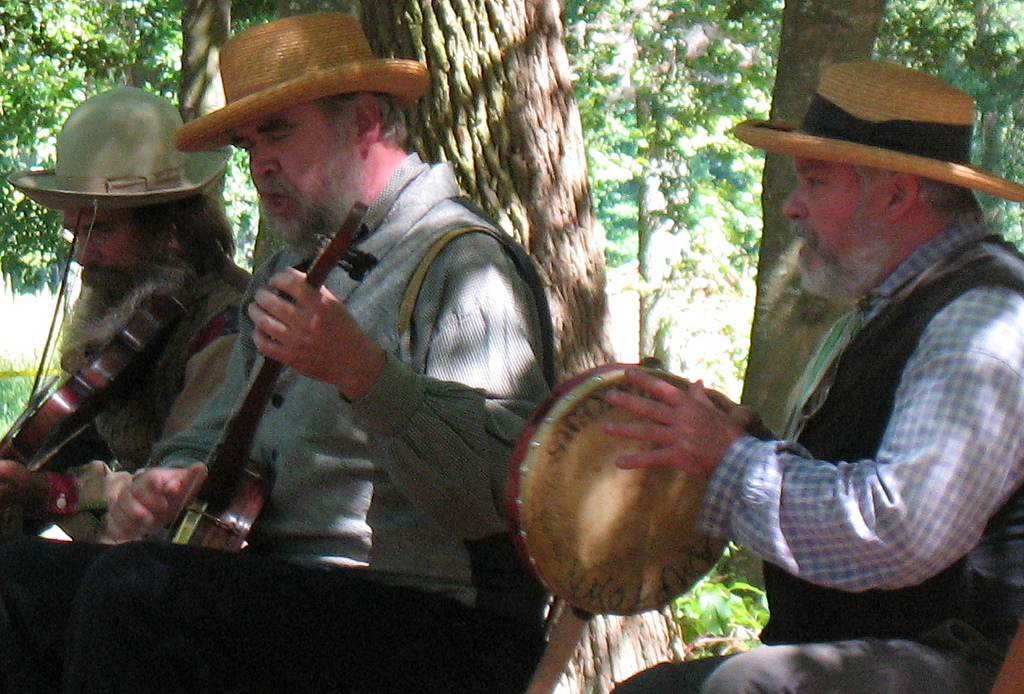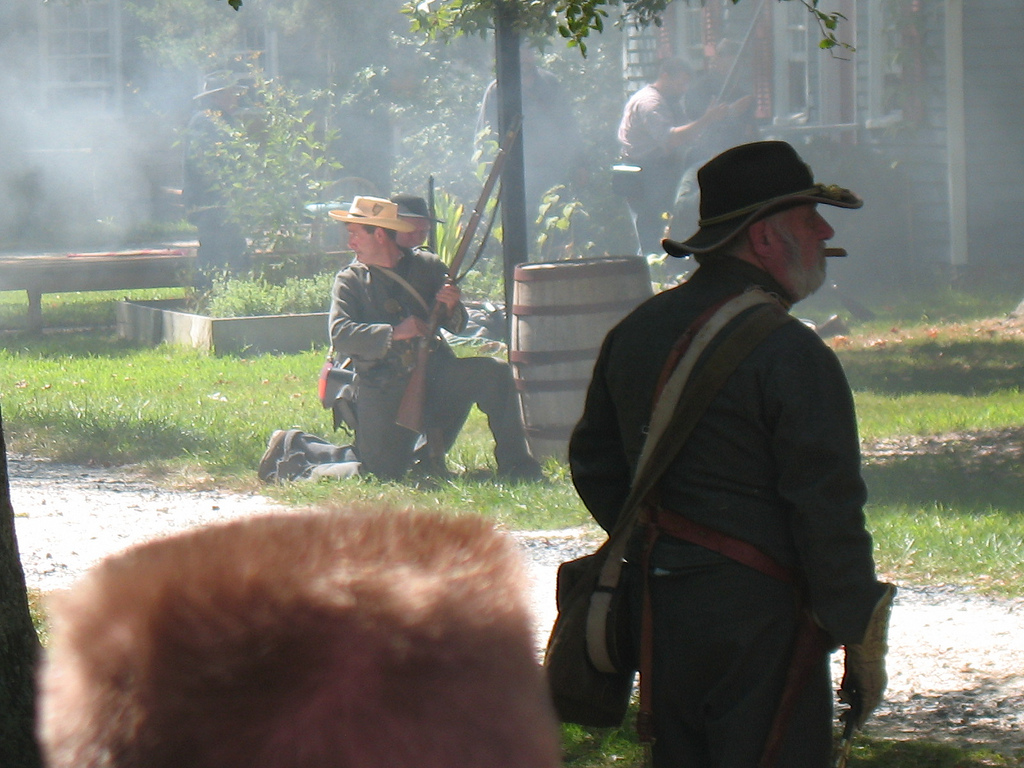Civil War Weekend: Time Travel, No DeLorean Required.

It was a sparkling Saturday morning as I traveled to Cape May to check out the Civil War Weekend at Historic Cold Spring Village. The weather was early fall perfection and I was entertained on the drive by selections from the left end of the radio dial including tunes from 60s jazz singer Nancy Wilson and a profile on legendary movie man, Cecil B. DeMille. As I approached from Route 9, Historic Cold Spring Village is so unassuming that I might easily have driven past without taking notice. But, once I parked the car and walked onto the grounds, it was impossible to not notice the energy and spirit of the place.
As the brochure says, Historic Cold Spring Village is an “Early American Living History Museum”, a circa-1800s world modeled after the original “thickly settled agricultural neighborhood” that once stood at this site. Most of the buildings that comprise the 30 acre village are transplants from other Cape May and Cumberland county locations, but all are comparable to the everyday architecture in southern New Jersey during that time.
On a typical village day, trades people go about their work, guides give tours, and crafters and artisans demonstrate their talents for visitors. But on a Civil War Weekend, the place takes on the appearance of a finely-detailed movie set. Dozens and dozens of groups, each representing a Civil War regiment, set up camp for the weekend and become fully engaged in life as it would have been lived in the 1850s and 60s. It’s quite something to behold.
I had a similar experience years ago when good friends chose the Pennsylvania Renaissance Faire as the site for their wedding. Not only did the bride and groom and their witnesses dress the part, but a selection of period costumes was available for all the guests, so that each of us in attendance could be the wench or swain of our choice. My son, in his mid-20s then, totally embraced the opportunity and spent the day happily living the life of a Medieval young man.
My first stop at Cold Spring was the field hospital, where I spoke to Larry, the surgeon. With ancestors from both the North and the South, modern-day Larry has always been fascinated by the Civil War. He got involved first in military reenactments, but the noise from the weapons played havoc with his hearing, so he now opts for the quieter role of healer.
I wandered on and found people gathered by the gazebo, listening as Mary Todd Lincoln (aka Melissa Rabinsky) wove a narrative about her marriage to “Mr. Lincoln” and her world both before and after his murder. Her account gave me a glimpse into that restless and challenging period in America, and a more tangible idea what life was like for women during that time. Melissa, who’s been a current day conduit for Mary Lincoln for over three years, says it’s her “quest to tell Mrs. Lincoln’s real life story”. Melissa started out doing reenactments, but found herself drawn further into exploring Mary Todd Lincoln. “The more I read,” Melissa told me, “the more I wanted to read.” While most of what she does is “in character”, Melissa has to drop the persona to address certain topics. “A Victorian lady,” she explains, “would never tell her private stories.”
I stayed awhile longer in the grove and listened to The Camptown Shakers perform. This threesome, playing banjo, fiddle and percussion, provided an authentic and fitting audio backdrop to the day’s activities.
As I meandered more through the camps, I continued to marvel at how “real” it felt. Bearded, long-haired men were gathered around a fire, smoking and laughing while they told what I imagined to be bawdy stories. Clusters of weapons stood ready for battle, dusty uniform jackets hung outside the tent openings, children were playing games or reading, women were preparing food and doing handwork. While I am not so naïve as to think that life in America was as simple then as it seemed in this recreated community, I definitely appreciated the sense of simplicity.
At one camp, the temporary home of the 71st Pennsylvania Volunteer Infantry, I stopped to chat with Katie, who had just finished preparing a delicious meal of venison sausage, bread, nut butter and fruit. Katie’s involvement with this historical hobby began when her then 9-year-old son saw a book with pictures of Civil War artifacts and developed an interest in that rich period. Since her son was too young to participate unaccompanied, Katie went with him and, before long, she was hooked, too. “He taught me that I love history,” she explained. The deeper into conversation I got with Katie and others in her group, the more I began to recognize the appeal of what they were doing. Like actors who embody their roles while on the stage, folks who take part in encampments and reenactments truly live like the people they represent. “Once you’ve gone to the 1860s,” Katie told me, “you’ve been far away.” And having these first-hand experiences undoubtedly makes the past more personal and meaningful. “Our country and its history are precious,” Katie said, “and the best way to understand it is to live it”.
Following my delightful chat with Katie, I crossed the grounds to watch the staged battle between the North and South. Hundreds of people were gathered behind the barriers, waiting for the troops to begin their advances. Once the first shot was fired, the action was slow and steady, but non-stop, for a lengthy stretch of time. And, for someone not inclined to an interest in warfare, I had surprisingly powerful reactions to watching this drama unfold. I knew full well that it was just an elaborately constructed depiction of an historical event, yet my sensory perception knob was turned to 11. The sound of the gunshots vibrated through my body, the smell of dry leaves mixed with gunpowder invaded my head, and my eyes were fixated on the smoky haze that lingered long after the last man had left the battlefield.



